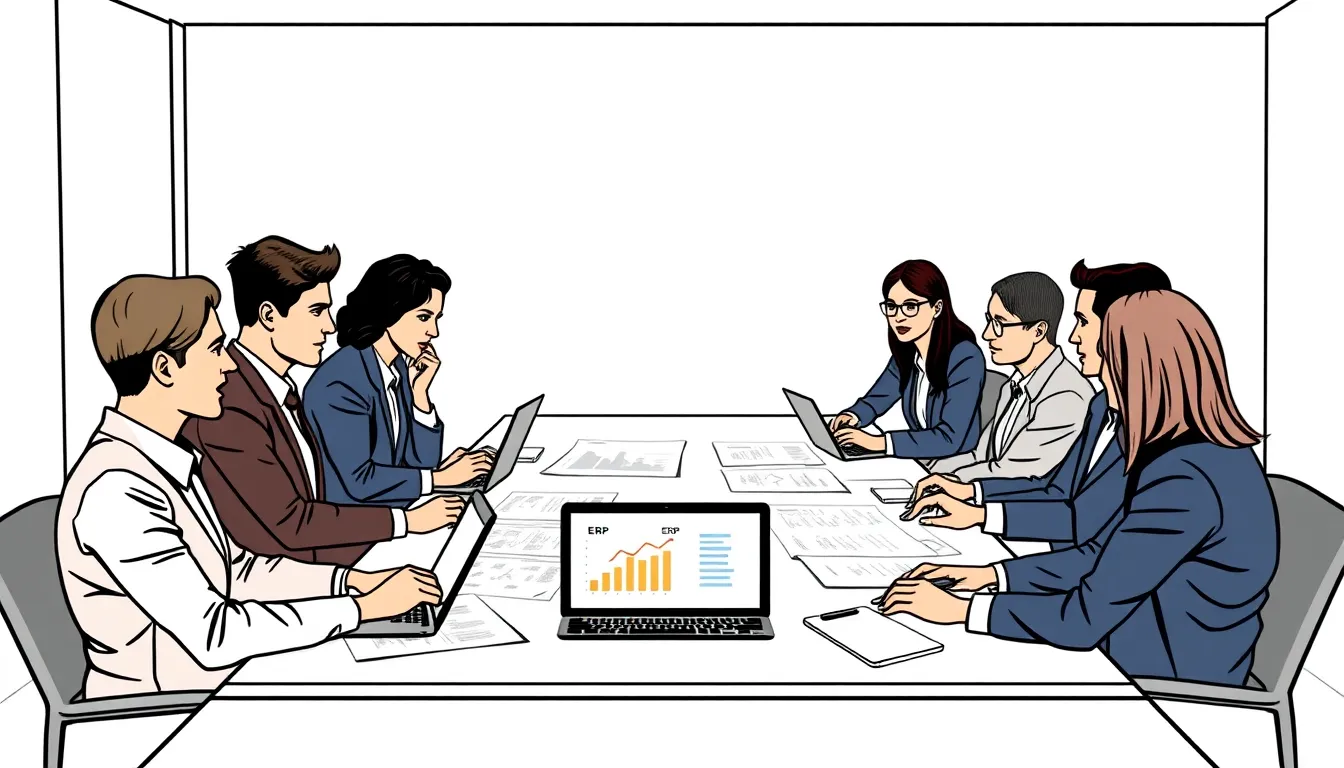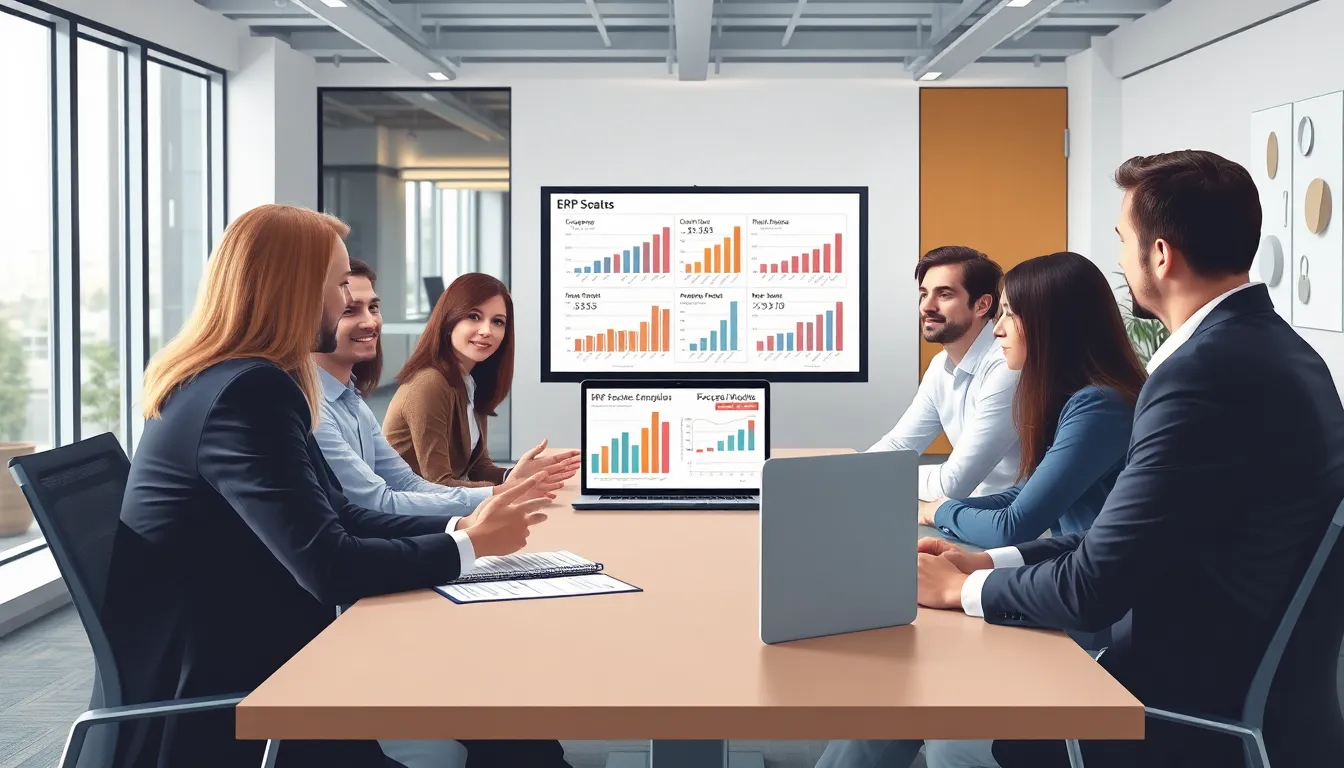Navigating the world of ERP software can feel like trying to find a needle in a haystack—if that needle were made of dollar bills. With prices that can make even the most seasoned CFO’s head spin, understanding the cost of ERP software is crucial for any business looking to streamline operations.
Table of Contents
ToggleFactors Affecting ERP Software Price
Several elements impact the pricing of ERP software. Understanding these factors is crucial for businesses seeking effective solutions.
Size of the Organization
The size of an organization significantly influences ERP software pricing. Larger organizations typically incur higher costs due to increased user licenses and greater complexity. ERP vendors often base their quotes on the number of users, which means more employees lead to higher expenses. Smaller businesses might benefit from more affordable options tailored to their limited needs. Consequently, evaluating the size helps in forecasting overall costs more accurately.
Industry Requirements
Industry-specific needs determine the costs associated with ERP software. Different sectors demand unique functionalities and compliance standards. For instance, manufacturing companies may require advanced inventory management features, while retail businesses may prioritize point-of-sale integrations. Vendors may charge a premium for industry-specific modules that enhance performance. Tailoring solutions to meet specific requirements ensures businesses optimize their investment in ERP systems.
Features and Customization
The features and customization levels of ERP software play a crucial role in pricing. Core functionalities typically come at a base price, but additional features can escalate costs significantly. Customization requirements, such as unique workflows or processes, can further increase expenses. Investing in essential upgrades often leads to better alignment with business objectives. Therefore, stakeholders must carefully assess their feature needs to avoid unnecessary costs while maximizing functionality.
Different Pricing Models for ERP Software


Understanding various pricing models helps businesses make informed decisions about ERP software. Each model offers unique benefits tailored to different needs.
Subscription-Based Pricing
Subscription-based pricing involves recurring payments, typically monthly or annually. Organizations benefit from predictable expenses, making budgeting easier. Often, this model includes updates and support as part of the package, enhancing value. Companies of all sizes favor this approach since it requires less upfront investment. Furthermore, subscription models allow businesses to adjust plans according to their growth or changes in demand.
One-Time License Fee
One-time license fees represent a significant upfront cost but can lead to lower long-term expenses. Businesses pay a set price for the software, granting permanent access without ongoing fees. This model suits companies looking for control over their investment and avoiding recurring costs. While often associated with on-premise solutions, some cloud providers also offer this option. Customization can incur additional fees, adding complexity to the initial investment decision.
Pay-Per-User Pricing
Pay-per-user pricing charges businesses based on the number of users accessing the ERP system. This flexibility helps companies align their costs with actual usage, making it easier to manage budgets. Smaller teams benefit from this model while larger organizations can scale according to needs. Organizations should consider potential growth when analyzing the long-term costs associated with pay-per-user pricing. In addition, this model often leads to increased expenses if the user count expands significantly.
Average ERP Software Prices
Understanding ERP software pricing reveals crucial insights for businesses of all sizes. Pricing varies significantly based on organization size, industry needs, and specific software features.
Small Businesses
Small businesses generally face lower ERP software costs ranging from $10,000 to $50,000 annually. Subscription models often suit them, providing flexibility and manageable monthly payments. Core functionalities typically suffice for many small enterprises, reducing initial expenditures. Limited users mean fewer licenses, helping to control expenses. Simplified solutions that address critical needs enable them to improve efficiency without overwhelming budgets.
Medium-Sized Enterprises
Medium-sized enterprises experience ERP software costs between $50,000 and $150,000 annually. These organizations frequently require more advanced features, including customization options that escalate prices. User counts can increase significantly, necessitating additional licenses and support. A combination of subscription and one-time fee models might align with their financial strategy. Investing in tailored ERP solutions enhances operational efficiency, justifying the higher costs.
Large Corporations
Large corporations encounter ERP software prices often exceeding $150,000 annually. Complex organizational structures and extensive user bases lead to increased expenses, especially with high licensing fees. Unique industry requirements demand specialized functionalities, further driving costs up. Many large companies utilize one-time license fees to minimize long-term expenses despite the higher initial investment. Advanced features, extensive customization, and robust support services play essential roles in justifying the substantial financial commitment.
Tips for Choosing the Right ERP Software Within Your Budget
Choosing the right ERP software involves thorough evaluation to ensure alignment with budgetary constraints. Several factors require consideration to make a sound investment.
Assessing Your Needs
Identifying specific business requirements is crucial. Organizations should prioritize essential functions that align with operational goals. Customizable features can provide value, but only necessary add-ons should warrant expenses. Core functionalities often support foundational operations, reducing complexity. Stakeholders need clarity on immediate and future needs to guide selection.
Comparing Vendors
Understanding the ERP landscape involves rigorous vendor comparisons. Potential users should evaluate multiple solutions against key criteria like pricing, features, and support. Prioritizing vendors with strong industry reputations fosters confidence in stability. It’s also wise to examine customer testimonials for insights. Gathering detailed proposals enables informed decisions that adhere to budget constraints.
Considering Total Cost of Ownership
Total cost of ownership (TCO) extends beyond initial pricing, encompassing long-term expenses. Users should account for maintenance, support, and training costs, which can significantly impact budgets. Some vendors may present appealing upfront offers but charge higher ongoing fees. Evaluating anticipated costs over the software’s lifespan aids in accurate budgeting. Businesses benefit from a comprehensive financial understanding before committing.
Navigating the landscape of ERP software pricing can be daunting for businesses. By understanding the various factors influencing costs and the different pricing models available, organizations can make more informed choices.
Prioritizing specific needs and evaluating vendors thoroughly helps ensure that the selected ERP solution aligns with operational goals while adhering to budget constraints.
Focusing on total cost of ownership allows businesses to anticipate long-term expenses and maximize their investment. Ultimately, a well-chosen ERP system can significantly enhance operational efficiency and drive growth.



